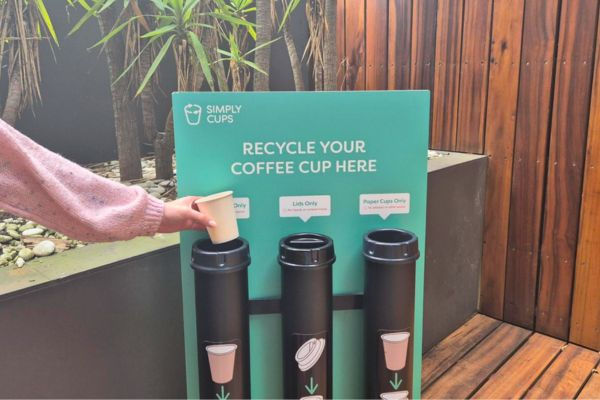A guide to compost bins, worm farms and bokashi bins.
- Simply Cups

- Aug 29, 2024
- 4 min read
Updated: Nov 8, 2024
Composting your food scraps will prevent them from rotting in landfill where they produce methane emissions. Not only will you create by-products your garden and pot plants will love, but it will also help you reduce the food waste you put in your general waste (which can be as much as a third to half of our household bins) and your contribution to landfill.
Using a compost bin, worm farm or bokashi bin are the three most common composting methods, but each method works differently, accepts different organic waste and require different amount of space in your home.
We explore the difference to help you decide which composting method suits you best, or even if you want to combine and use a few of them together.
Contents
What can I learn about the different types of home composting?
What are the different types of composting?
Compost bins:
Composting in compost bins happens in the presence of moisture and oxygen, when microorganisms break down the material. In other words, you collect your organic waste, toss it around to aerate it occasionally and nature does the rest.
There are three main ‘compost bin’ solutions: the piling method, a compost bin or a tumbler.
1. Piling method
The piling method is as the name suggests, you can heap the materials you want to compost into a pile and turn them periodically to aerate.

2. Compost bins
With a bin, which can be enclosed or open, purchased or handmade, the compost is kept in a confined area.

3. Tumblers
A tumbler typically takes up less space than a bin and makes the aerating process easier through rotating the barrel.

Worm farms:
Worm farms utilise special worms that have a great appetite for food waste. They produce a liquid fertiliser called worm tea, that is a great general fertiliser for your plants when diluted with water, and a thick brown sludge called worm castings which can be added to your potting mix or compost.
There are two main types of worm farm, above ground worm farms and in-ground worm farms:
1. Above ground worm farms
This type of worm farm is usually a stand alone that has multiple layers of trays for switching around. The trays can be used to alternate between collecting worm castings and for disposing of food waste. These above ground worm farms also typically come with a tap at the bottom for draining worm tea.

2. In-ground worm farms
An in-ground worm farm, also known as a worm tower, is typically a cylindrical structure that has holes up the sides which is submerged in soil, usually in planter boxes or garden beds. The worms are released to live in the soil around it, and food waste is placed inside the cylinder for worms to access and consume. The benefits of the worm farm are directly distributed to the plants by the worms and eliminates the need to collect worm tea and casting.

Bokashi bins:
A Bokashi bin uses microbes to break down your food waste, doesn’t smell or make a mess.
They either utilise a liquid microbe spray or a dry mixture that contains microbes that break down your food waste. Bokashi bins have two beneficial by-products, a liquid that can be diluted and used in the garden and a fermented semi-solid matter that can be buried in your garden or given to a neighbour or community garden.

What can I compost?
Composting is great, however not all composting methods accept all types of organic waste.
The table below gives general advice on what can be composted by each methods:
For animal poo:
Compost heaps only works with poo from herbivours such as cow, horse and chicken. You can add your cat and dog poo to worm farms, but we recommend a separate worm farm for this where the castings are not used in any plants that will be eaten. Also avoid putting the poo in if your pet has just taken any medication, particularly worming medication as that will kill the worms.
How do I choose a method?
The best composting method for you will depend on:
What type of space you have.
What you want to compost.
How much you are willing to spend.
How much time you have to maintain.
What type of output you would like.
The table below summarises the differences in the methods:
What if none of these methods work for me?
That’s not a problem at all, you can accumulate your food and garden waste and look for a community composting hub or community garden near you.
Alternatively, you can utilise the FOGO bin which accepts food waste in addition to garden waste if it’s available in your council, and if it’s not, make sure to contact your council regarding the timeframe for rollout in your area to let them know you’re interested.
You can read up on why food waste is a problem and other ways to manage your food waste in a separate post.
Sources:
The Quick Guide to Composting, Worm Farms and Bokashi, Environment Victoria, 2010



